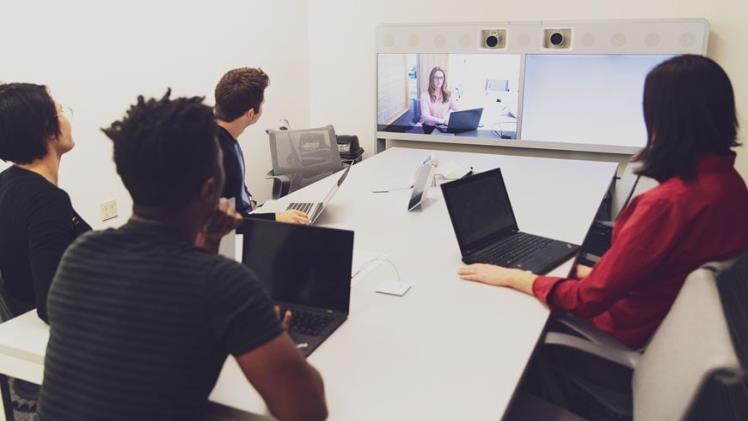Maintaining a good connection with your employees is essential to keep the workplace calm. Understandably, collaboration promotes efficiency, productivity, and overall camaraderie.
Of course, collaboration is a two-way road. Everybody, not just one individual, must endeavor to get along and keep organized for the firm’s sake. A shared calendar is one of the tools that might help you achieve this aim.
Most of us don’t know it, but having a shared calendar improves productivity and communication in both your office and home. Sharing your schedule with coworkers, family members, and clients can help you stay organized.
Not only that, but they increase your productivity and reduce minor mistakes. The effects of correctly using a shared calendar will be remarkable. However, it would help if you improve your understanding of your calendar. Here are some reasons why employees must use a shared calendar.
Improves Lines of Communication
One of the most significant benefits of having shared sync calendars with your team members is that you can plan projects or arrange meetings with the press of a button whether you’re in the office or not. It also helps you avoid missing client meetings and organizes your day.
Moreover, a well-organized group calendar will keep your team members on the same page when allocating work and scheduling meetings.
If you make changes online, your calendar will be immediately updated, preventing miscommunication and misunderstanding. Several free applications will choose your availability and send all the necessary information to the appropriate team members through a link.
Transparency Helps with Task Management, Allowing Employees to Rest and Learn
Before you even begin to determine their real usage rate, your group calendar is a visual representation that may quickly warn you that somebody has a lot on their plate or not enough.
Calendar transparency is critical for managing workloads and performing resource smoothing (booking staff for fewer hours than anticipated to work). When you leave time in an employee’s day, they may utilize it to take an online course or research a new feature relating to the job at hand.
In the long term, this assists them in upskilling, and your organization benefits from the return on investment on that “spare time” on their schedule.
Additionally, a properly aligned schedule allows workers to take vacation days and rest, which is good for their mental health and corporate productivity.
Scheduling becomes easy when anyone can see the vacation days instantly, and you don’t feel bad or embarrassed about declining a project or meeting. Your calendar does the talking for you!
Increases Productivity
Organizing employee group meetings may be time-consuming and difficult. You’ll be able to save time that would otherwise be spent attempting to find the proper time and date with a shared calendar.
Keeping a competent personal assistant means using the appropriate calendar. It will only take around 16 minutes to regain your attention. Sharing the exact schedule will increase productivity and help you focus on all key topics.
Improves Visitor Handling
A team calendar not only improves communication but also improves the visitor management process. When visitors arrive at your organization, the receptionist may quickly access the team calendar to overview workers’ schedules rapidly. This allows the receptionist to deliver accurate information to guests about an employee’s whereabouts or availability.
The receptionist may also use an employee’s calendar to contact or email them to notify them that a guest has come.
Set Up Meetings for Multiple Individuals
If a group of individuals is working on a project and a meeting has to be scheduled, one person can arrange it for everyone. They must check the calendar to ensure the meeting time does not interfere with anybody else’s plans.
It’s much more efficient than calling each other many times to find out when everyone can come.
Balances Assignments
One of the most significant advantages of having shared calendars is the ability to balance responsibilities among your team members. After seeing the calendar, you will better understand your employee’s availability and commitments. It also allows you to organize your work and make appointments.
You may also review prior team calendars to better understand how your team members spend their time, who they’ve met with, and what tasks they’ve completed.
Balances Your Assignments
The nicest thing about utilizing shared calendars is that they balance your duties with the other team members. You might also look at the calendar to better understand your workers’ availability and obligations. This will assist you in organizing your appointments and responsibilities. You can also go through their schedules to see how they spend their time, who they meet, and what tasks they do. It will assist you in better planning your initiatives.
Access From Any Location
The calendar applications of today may be accessed directly from your mobile device. That means you’ll have fewer things to bring to each meeting or transport between your workplace and home.
During meetings, a single individual can set up the subsequent one and sync it to the phones of everyone present in the room.
Employers Are Aware of Who Your Coworkers Are
When everyone is busy and traveling in various ways, it may be beneficial to have a calendar that everyone can share. You can determine whether or not a coworker is absent simply by glancing at the calendar, which saves you the trouble of repeatedly calling or texting them.
Conclusion
Why struggle with various calendars to keep track of all your responsibilities when a dedicated team calendar may help you remain more organized? Project managers benefit significantly from shared calendars. They disclose information, provide complete transparency, and provide several advantages.





